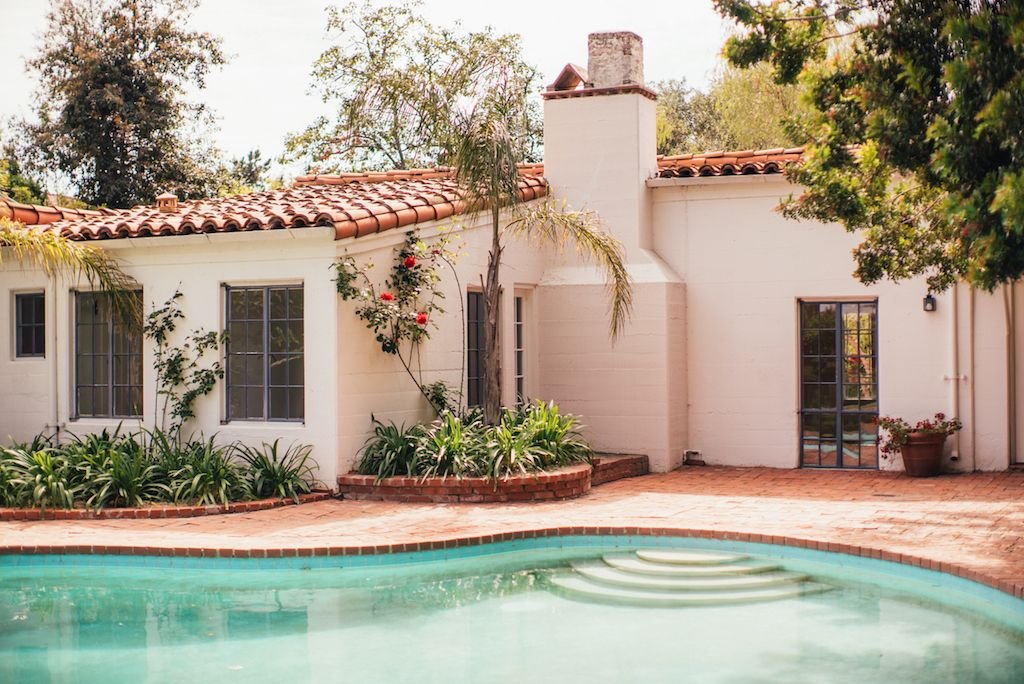Saving Marilyn Monroe’s House - It’s Complicated
12305 Fifth Helena Drive, Marilyn Monroe’s final residence
The last week has been tumultuous for fans of Marilyn Monroe and for historic preservationists in Los Angeles. On Tuesday, news leaked of a demolition permit issued for 12305 Fifth Helena Drive. The idea of this particular house being demolished had the community up in arms because none other than Marilyn Monroe had purchased and occupied this house in 1962 shortly before her death. It was the only home Marilyn ever owned. This house, while a private residence, has become a shrine of sorts, a way to remember Marilyn Monroe for fans all over the globe.
The office of Councilwoman Traci Park received hundreds of letters, emails, and calls to halt the destruction of Monroe’s former home. Park’s office answered the call, the permit was revoked, and the clock is currently ticking on the 75 days the Cultural Heritage Commission has to evaluate and potentially approve the home as a landmark.
Los Angeles preservationists lose a little of their battle every day as older homes and buildings are being replaced with modern and new structures that do little to preserve the character of a city that sees approximately 46 million tourists each year. It's a frustrating position to be in, and as the owner of The Old Hollywood Walking Tour, I feel this myself as I strive to paint a picture of Hollywood that is fading fast and in some cases, no longer exists.
Before I say what I’m about to say, I want to make it known that personally, I very much am in favor of landmarking this home. I want Marilyn’s legacy to live on in physical spaces as much as possible. The loss of our city’s historic identity is deeply upsetting for me. However, as the wrath of the Marilyn Monroe fandom comes down upon Los Angeles, I’d like to bring up a few (and perhaps unpopular) points to keep in mind. Please stay with me until the end…
12305 Fifth Helena Drive is a private home. Things like demolition and renovations are not just the prerogative, but the right of property owners. A scenario in which the general public and the local government can dictate what happens on private property (as long as it’s not illegal) should not happen except in the rarest of instances.
There’s no accounting for taste. Everyone is not going to agree on subjective issues like architectural styles and interior design, and even what is historically significant. I myself don’t understand the whole “metal shed” style of architecture taking over the landscape, but I’m sure the people building and living in those homes look at the (gorgeous) Spanish and Mission-style houses I love and think they look fussy and old.
The logistics of turning this home into a museum are daunting, to say the least. The largest obstacle, in my opinion, is having actual people on a board (assuming this museum is non-profit) to oversee the day-to-day operation and management of the property, and having volunteers to keep the space open. Many similar organizations struggle with this type of manpower issue. As beloved as Marilyn Monroe is, I can’t see this situation being any different.
Landmark status has only recently begun to take into account famous owners. Traditionally a structure receiving landmark status would have to demonstrate that it possesses exceptional design merit or historical significance and meet the predetermined Historic-Cultural Monument designation guidelines.
Landmark status is not something that is taken for granted - there are thousands of structures across Los Angeles that could be considered significant for reasons of architecture, age, former residents, significant events, etc. But it takes someone stepping forward, bringing a specific home to the attention of the HCM, navigating a long, time-consuming application process, chasing down supporting documents and photos to support the case, and a vote by a committee to bestow landmark status. When one considers this process, multiplied by all of the eligible buildings in our county, I think we are lucky to have the number of landmarked locations that do exist. It’s not a perfect system, but for now, it is what we have to work with.
I am so grateful to the many people who have put in the work to designate the landmarks we have today. I am also grateful to all of my fellow Marilyn Monroe fans who helped to sound the alarm and get the Council office involved. If the same number of people who made comments on the internet and called and/or sent emails to the Council office are in on helping to do the work it actually takes to preserve our history, I’d say our chances of saving this significant piece of Hollywood history are strong. My question to the Marilyn Monroe fan community is, after the dust clears on the online storm created by those who feel strongly about keeping Marilyn’s home, do we have what it takes to back it up?
I’d love to hear your thoughts in the comments below.

